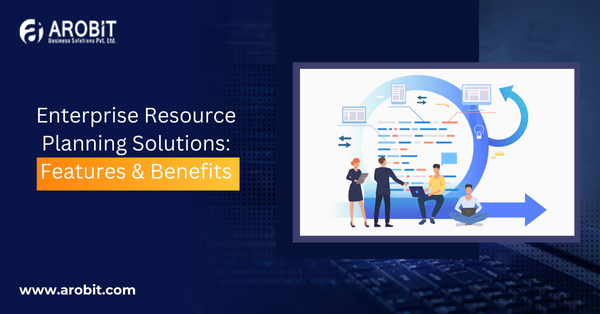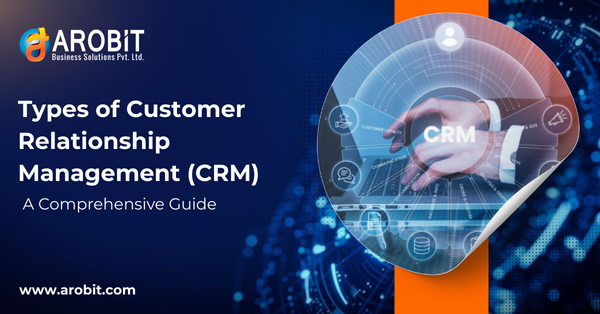In today's fast-paced business landscape, organizations continually seek improvements in operations, productivity, and sound decision-making. In 2025, over 70% of enterprises and businesses would, by estimation, avail some ERP systems to target these areas. Therefore, ERP systems have become tools without which no decent business can consider integrating and automating certain processes in their operations to improve efficiencies or reduce operational costs.
What Is an ERP System?
An ERP is an all-in-one software technology that places the finance, manufacturing, and supply chain management functions in one big bucket. It permits cross-department communication and data flow, avoiding the problems caused by data silos while enhancing collaboration between departments and other organizational units. Among such ERP systems are SAP, Oracle, and NetSuite, which offer a range of integrated modules to meet different business needs. Designed to automate processes, provide better insights, and cut operational costs, ERP systems are necessary for businesses that desire to scale their operations effectively.
The Foundation: Integration
One of the great challenges businesses face is the siloing of information, where different departments keep their data separate from others. This disconnect brings about inefficiencies and errors. ERP systems bridge this gap by offering a common overview of data, ensuring that all departments have a single and continually updated source of information. Integration here allows for collaboration, and that will more than likely increase productivity.
- Near-real-time data sharing enables the instantaneous updating and sharing of information, which has a significant impact on decisions regarding inventory management.
- Business intelligence improves a lot with ERP systems because it will better enable a company to allocate resources through a single view of operations.
Power of Automation
ERP systems offer increased automation of repetitive tasks such as payroll processing, order management, inventory control, etc. This means less manual work, fewer errors, and more time for employees to devote to more strategic tasks.
- One example is that inventory tracking can automatically cause shipments and invoicing to happen, which increases operational efficiency and makes customers happier.
- Other attributes of automation are efficiency, decreased labor costs, and increased employee productivity.
Data Analysis: Turning Information into Insights
One of the best apuestas is to analyze information so that others can look into insights. ERP systems put tools that help employees analyze data into their hands, thus enabling optimization of myriad operations in such areas as:
- Cost reductions: A feat achieved from scrutinizing financial data on areas where a company can minimize its operational costs;
- Fraud detection: Advanced analytics that would detect these irregularities from organized financial transactions;
- Customer service: Data analysis in connection with insights into customer behavior or preferences, which in turn can sway customer service to highly favorable outcomes.
Reporting: Informed Decisions, Proactive Problem-Solving
Better reporting is necessary to help the executives make an informed decision. The ERP reporting modules collate data compiled into comprehensive reports, often displayed in a visually engaging way with the use of such tools as charts, graphs, and dashboards. This allows for quick identification of trends and potential issues by the executives so they can respond proactively in case of troubles.
- With real-time reporting, almost all decisions will be carried out using information that is today, unlike those boring reporting systems used in trials in the dark ages.
- Easy access to KPIs and other key metrics will have implications for decision-making based on data.
Tracking and Visibility: Understanding Key Metrics
ERP platforms allow companies to track and figure out key business metrics in real-time. Such visibility is critical in dissolving information silos within the organization and ensuring that every department is aligned with the larger strategic goals of the company.
- Near-real-time data enables decision-makers to respond to changes within the business environment swiftly.
- Various departments can track performance metrics and boost overall operational efficiency.
Core Function: Accounting
The accounting module is a central building block in ERP systems, with functions that include:
- Accounts Payable (AP) and Accounts Receivable (AR) management.
- General Ledger (GL) management
- Budgeting and forecasting tools
- Advanced tasks like tax management and multi-currency reconciliation.
ERP systems reduce overall month-end close time through financial automation and compliance with financial standards.
Holistic Financial Management
Financial management is complicated, with the activities of monitoring, measuring, and reporting information. ERP systems assist with providing an integrated solution for these operations in the finance team's second half, allowing for effective financial management in the context of larger organizations.
- Real-time financial information adds to the financial planning and analysis.
- Compliance management will be simplified thanks to automated financial reporting along with reconciliations.
Customer-Centric Approach: CRM Integration
Features integrated with CRM will build a business picture by providing customer information through a common database. Integration makes it possible for such automated processes as
- Purchase orders (POs) and accounts receivable reminders.
- Notifications of the sales pipeline to ensure timely follow-ups.
Empowering Sales and Marketing
An ERP provides sales and marketing teams with overall efficiency in sales processes, such as quoting, managing commissions, and tracking profit margins.
- These automate the sales processes, getting higher efficiency and less manual error.
- Customer interaction data analysis provides better insights for marketing.
HR Efficiency: Human Resources (HR)
The HR component of the ERP system is an end-to-end employee management system that handles payroll, recruitment, and benefits deductions in an automated fashion. It affords tremendous time savings, significant cost savings, and a reduction in errors otherwise common in manual processing.
- It streamlines the entire employee lifecycle from recruitment to retirement.
- It ensures compliance through automated reporting and tracking of HR regulations.
Streamlined Operations: Supply Chain Management (SCM)
Supply Chain Management (SCM) allows ERP systems to analyze and evaluate their efficiency by monitoring demand, inventory, manufacturing, logistics, and distribution. By completely automating supply chains, we can further optimize operations with:
- Purchase, work, and transfer orders.
- Inventory control makes sure goods are always available when needed, minimizing stockouts and excess inventory.
Optimized Production: Manufacturing
ERP in manufacturing ensures efficient processes, including product planning, sourcing, production monitoring, and forecasting. Integration with SCM improves inventory planning and forecasting to ensure production is done to meet demand without excess inventory that can create cash flow emergencies.
- Production planning is optimized through real-time data on production capacity and material availability.
- Where it's impossible to avoid the continuity of production processes, automatic monitoring and reporting will guarantee quality control.
ERP Modules
ERP systems typically include a variety of modules tailored to specific business needs. Common modules include:
- Finance and Accounting
- Procurement
- Manufacturing
- Inventory Management
- Order Management
- Supply Chain Management
- Customer Relationship Management (CRM)
- Human Resources Management
ERP Software Development Companies
Several ERP software development companies in India are capable of offering customized ERP solutions catering to every type of requirement.ERP solutions generally include modules such as CRM and HR management.
FAQ
Q1. What is ERP vs. CRM?
A1. ERP integrates internal business processes, such as finance, manufacturing, or HR, while the CRM perspective is on managing customer interactions or relationships.
Q2. What is an ERP system example?
A2. Some of the examples of ERP systems are SAP, Oracle, and NetSuite.
Q3. What is ERP used for?
A3. It is the automation of business processes to increase efficiency in operations and assist decision-making.
Conclusion
In conclusion, ERP systems are extremely valuable to the businesses of today looking to streamline their operations, increase productivity, and make informed decisions. By integrating different parts of the business into one system, ERP solutions provide a range of benefits from automation and data analysis to improved financial management and customer service. No matter what you are—a small startup or a big corporation—venturing into ERP solutions can be a stepping stone toward success for your business.
If you are planning to implement the ERP, the chosen solution must fit the needs and goals of your business. If you select the right ERP system, it will open up new operational avenues for efficiency, productivity, and growth in your organization. With top ERP software developers in India, businesses can leverage customized solutions to gain a competitive edge in 2025.








